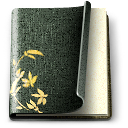Sushi
- Published 2010.7.13
The history behind sushi

It is said that South-East Asia is where sushi originated from. First created in 4th Century B.C. was narezushi (Ńü¬ŃéīŃüÜŃüŚ), a food consisting of salted fish wrapped in rice and then fermented. At this time though, only the fish was eaten, leaving the rice untouched.
Narezushi spread through China, and in the 8th Century came across the sea to Japan. In the latter half of the Muromachi Era (1333-1573) it became established as seiseizushi (ńö¤µłÉŃüÜŃüŚ) , where the rice was eaten along with the fish.
The general image of Japanese sushi is nigirizushi (µÅĪŃéŖŃüÜŃüŚ), hand-moulded vinegar rice with fresh fish placed on top. But this type of sushi has been around only from the 19th Century. Some nigirizushi was called edomaezushi (µ▒¤µłĖÕēŹÕ»┐ÕÅĖ/ Tokyo stylesushi) for using fish and seaweed taken out of Tokyo Bay, while other nigirizushi, sold from food carts, was called hayazushi (Ńü»ŃéäŃüÜŃüŚ) .
Due to the large Kansai earthquake disaster in 1923, Tokyo sushi makers returned to their hometowns, resulting in the national wide-spread of sushi.
In the 1980ŌĆÖs, there was a ŌĆ£sushi boomŌĆØ in North America, where the salmon and avocado California roll, among others, became famous around the world.
Presently, sushi included variations such as teriyaki and tempura, and has become the pinnacle of Japanese cuisine.
